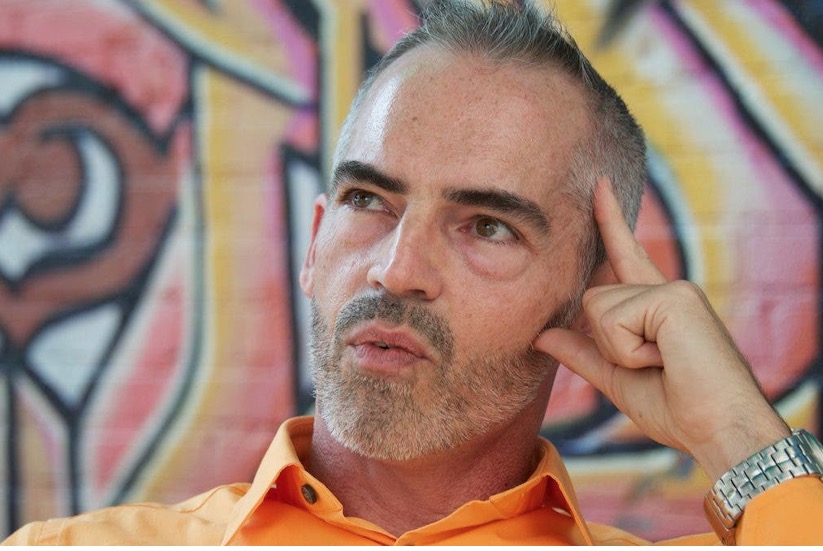CommentsHOUSING WATCH - “More than 4,000 units of affordable housing and counting!”
This was the subject line for an e-mail I received from CD 13 Councilmember Mitch O’Farrell earlier this month. It definitely caught my attention. I opened it and started to read….
“Dear Casey,
“Providing quality, covenanted affordable housing in the 13th District for working people and families has always been my priority.”
Well, that’s good news, because affordable housing is certainly needed in CD 13, an area that includes Glassell Park, Echo Park, Silverlake, Westlake and Hollywood. According to the 2020 Greater Los Angeles Homeless Count, O’Farrell’s district had a homeless population of 3,907, a 22% increase over the previous year. It’s good to know that affordable housing is a priority for the Councilmember. The e-mail went on….
“Since taking office in 2013, more than 4,000 units of affordable housing have been built, approved, financed or are under construction in the 13th District. That’s roughly 29% of the approximately 15,000 total new housing units in that time frame.”
Wow. That’s amazing. While the Councilmember doesn’t claim that all 4,000 affordable units have actually been built, he’s basically saying that he’s responsible for the creation of 4,000 affordable units since he took office. And he also says that this is about 29% of the 15,000 new units created during the same period. This surprised me, because the vast majority of the Transit-Oriented Community and Density Bonus projects that have been approved in O’Farrell’s district since 2013 have only included between 10% and 15% affordable housing, sometimes much less. In theory a large number of 100% affordable projects could explain the discrepancy, but those are few and far between.
Call me a cynic, but over the past several years I’ve learned that it’s best to be skeptical about claims made by members of the LA City Council. Fortunately, O’Farrell was good enough to provide a link [https://cd13.lacity.org/results/Affordable-Housing] to the data he’s basing his claims on. I decided to take a look.
The list includes over 200 projects, and I knew I wasn’t going to be able to verify each one, so I started with the projects I was familiar with, and then looked into a few others at random. Here’s what I came up with….
Among the projects listed under 2013 is 1605 N. Cherokee in Hollywood, which contains 66 units of affordable housing. But while the project was completed during O’Farrell’s term in office, according to LA City Planning records it was approved by the City Planning Commission on February 23, 2011.
The determination letter actually lists Eric Garcetti, O’Farrell’s predecessor in CD 13, as the councilmember associated with the project. Is it really fair for O’Farrell to take credit for affordable housing that was approved two years before he took charge of CD 13?
Moving down the list, under 2018 it includes the massive Crossroads project at 6701 W. Sunset, which boasts 950 residential units, of which 105 were designated affordable. There are a couple of problems with this one. In the first place, the list says the project has been completed. Actually, construction hasn’t even begun. In the second place, O’Farrell’s list doesn’t mention the fact that construction of the Crossroads project would involve the demolition of 82 existing rent-stabilized units. Somehow it doesn’t seem completely honest to take credit for creating 105 affordable units without acknowledging the destruction of apartments that are already occupied, in many cases by low-income households.
The next project I looked at was a little confusing. The list says that 111 S. Lucas, in Westlake, is a 125-unit residential building with 123 affordable units. But when I looked at LA City Planning’s Zone Information and Map Access System (ZIMAS), the info for that parcel only gave a determination letter for a project at 1416 W. Beverly that at first seemed to consist of only 68 units. On reading further, I found out that the project had two components, a 6-story building with 68 affordable units and a 5-story building with 57 senior affordable units. If we assume that each building has one apartment set aside for the manager, this jibes with the info on O’Farrell’s list, a 125-unit residential project with 123 affordable units.
But on scrolling down further, I found that O’Farrell also listed 1416 W. Beverly as a separate project, again taking credit for 125 units of which 123 were affordable. It appears that the Councilmember has listed the same project twice at different addresses. Beyond that, the date on the determination letter is March 24, 2010. Both addresses appear under 2018 on O’Farrell’s list, and that may be when the project was completed, but it seems like it was approved about three years before he took office.
The last project I looked at was 4643 W. Maubert in East Hollywood, a new 8-story building with 153 units, 17 of which are affordable. The list says this project is in the pipeline, which means it’s been approved but not yet built. All of the information appears to be accurate, but the problem here is what’s missing. While the project does include 17 affordable units, O’Farrell’s list does not mention that there used to be 14 rent-stabilized units on the site. They’ve been demolished to make way for the larger building.
Is it really honest to take credit for the creation of new affordable units without acknowledging the loss of rent-stabilized apartments that offered housing for low-income households? This isn’t just an issue with O’Farrell. LA City Planning proudly posts reports on affordable housing that’s been created without acknowledging the loss of existing units, including rent-stabilized units. These reports are misleading, because they talk about new units approved without calculating the actual net gain in units accessible to low-income households. Developers get huge density bonusses if they’re willing to include affordable units in their projects, but under State law, they’re allowed to include replacement units in their calculations. This is how you get projects like 4643 W. Maubert, where the City approved an 80% increase in density in exchange for the inclusion of 17 affordable units. Unfortunately, when we factor in the loss of 14 rent-stabilized units, we only get a net gain of 3 units accessible to low-income households.
Even if O’Farrell’s claim of 4,000 new affordable units were more or less correct, the fact that he doesn’t talk about the loss of housing in his district during the same period means that we’re not really getting a clear picture of what’s been happening. According to data from the Los Angeles Housing Department, 1,691 rent-stabilized apartments were removed from the market in CD 13 between 2014 and 2020. Just do the math. O’Farrell’s claim that he’s responsible for the creation 4,000 affordable units doesn’t really tell the whole story.
Unfortunately, the problem goes way beyond O’Farrell’s questionable claims. Apparently, the City of LA can’t even keep track of the affordable housing it has approved. A 2021 story published on Capital & Main shows that the City’s inventory of affordable units fails to account for many units that supposedly exist. The author says that of 20 buildings certified for occupancy at the time the story was published, a list from the City’s housing agency omitted 12. And renters seeking to apply for affordable housing found that info included in the City’s database is sometimes inaccurate.
So it’s not just O’Farrell. Many of the folks at City Hall boast about what a great job they’re doing when it comes to affordable housing. But the tens of thousands of rent-burdened tenants struggling to get by in the City of LA would probably have a different story to tell. Our politicians’ claims about wonderful things they’re supposedly doing often don’t match up with the grim reality that the people of LA are actually living.
(Casey Maddren is a CityWatch contributor.)














